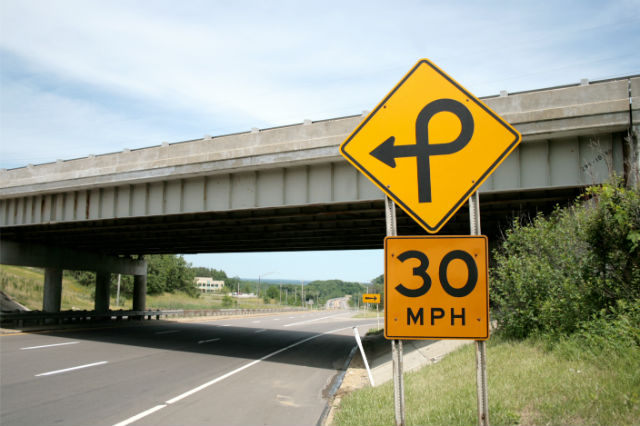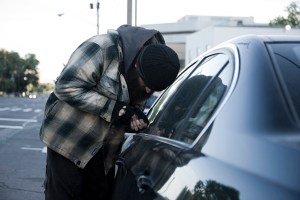Safety should always be the top priority when behind the wheel, but drivers should be especially alert, aware and defensive on days when conditions are not ideal.
Always obey traffic warnings and stay off the roads when directed; however, if you do find yourself on the road when hazards are heightened, here are a few safe driving tips to keep in mind.
Headlights and Hazard Lights
We all know to put our headlights on when it gets dark, but they should also be employed during adverse weather conditions. In fact, many states require headlights to be on whenever wipers are in use. Studies show that driving with your cars headlights on all the time can reduce fatal frontal crashes by 10%.
Low beams are more effective in the rain and fog. The light from high-beam headlights bounces off water and reflects back at you, further impairing your visibility. Remember to also periodically check your headlights. A clouded or yellowed appearance can reduce the amount of lighting produced by nearly 80%.
In most cases, hazard lights should only be used during an emergency, such as if your car has broken down or you have to pull over to the side of the road. This helps warn other drivers of a temporary hazard. Using your hazard lights while driving on the other hand, can distract or confuse others on the road. Many states prohibit the use of hazards while driving. If you truly feel conditions warrant the need for hazard lights, consider stopping and waiting out the weather, as the low visibility may make driving too dangerous.
Slow Down, Move Over
First responders play a vital role in keeping drivers free from harm as well as ensuring that roadways are running as smoothly as possible. In order to do their job, they are often forced to work just a few feet away from speeding vehicles.
Slow down, move over laws aim to keep police officers, firefighters, roadside technicians and other first responders safe. These laws, versions of which exist in all 50 states, direct drivers approaching a vehicle with its emergency lights illuminated to exercise caution, slow down and, if possible, move over away from the emergency vehicle. You can read the specifics of your state’s slow down, move over law by visiting the AAA Digest of Motor Laws.

When to Go Slow
Driving too fast under any condition is both dangerous and far too common. Roughly half of all drivers report going 15 mph over the speed limit on a freeway, according to AAA’s annual Traffic Safety Culture Index. In turn, speeding contributes to nearly one-third of all traffic fatalities.
When conditions become hazardous, such as in adverse weather or reduced visibility, driving slower becomes even more important. Traveling at a lower speed helps you control your vehicle, come to a quicker stop and provides you with more response time. You should also increase your following distance in these instances.
Even if driving conditions are ideal, certain situations call for reduced speeds, such as navigating winding roads. Tight turns are difficult to execute at higher speeds. You should also slow down when approaching a blind corner be able to react to oncoming traffic.
When to Stop Driving
Sometimes the best decision is not to drive at all. If conditions are too severe to drive in, pull over and wait until the weather lets up. Rest areas are the best options. If you are forced to stop on the side of the road, pull off the road as far as possible, keep your seat belt fastened and turn your hazard lights on to ensure other drivers can see you.
Bad weather is not the only reason to stop. If you feel drowsy, find a safe place to park and take a break. Sleep deprivation slows reaction time, decreases accuracy of responses and leads to long lapses in attention. The AAA Foundation for Traffic Safety found that drivers who lack adequate sleep have significantly elevated crash rates, and that the estimated crash risk associated with driving with only four to five hours of sleep is similar to the risk of driving with a blood alcohol concentration equal to or slightly over the legal limit of 0.08.
Visit AAA.com for more driver safety tips.
















